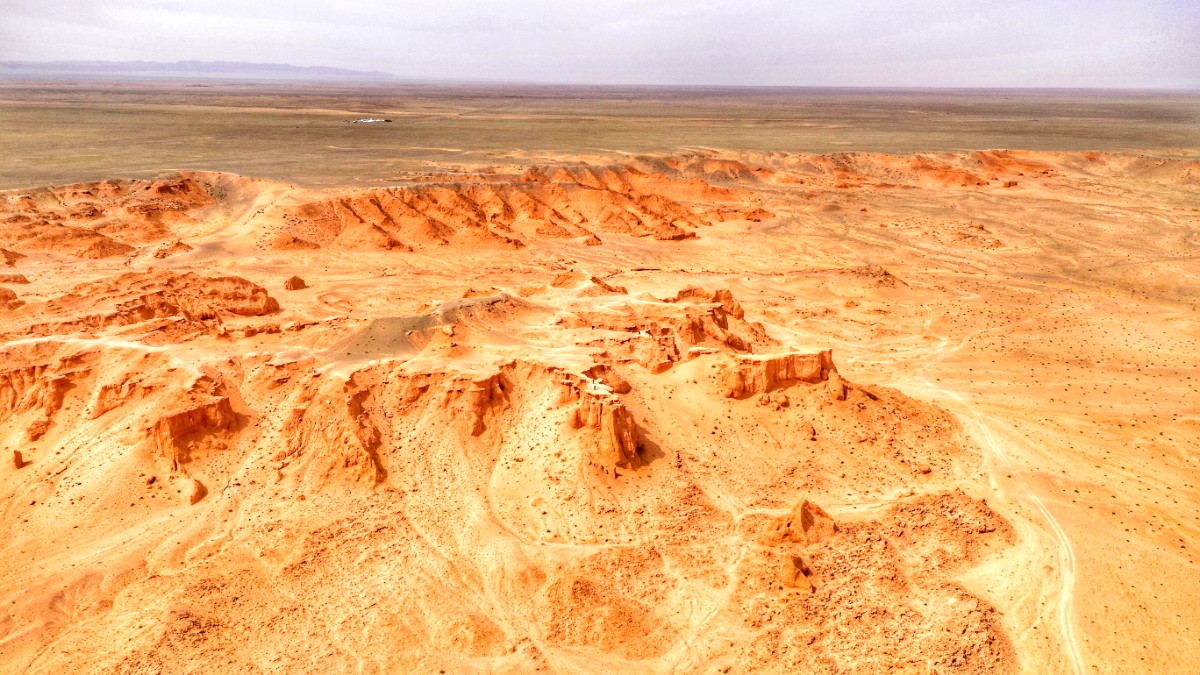
Mongolia
The capital city has an extensive public bus system and trolleybuses. No metro or tram system exists.
No public transportation system (metro, buses, trams) operates within the Gobi Desert region or between its attractions. Travel relies exclusively on private vehicles or organized tours.
Walking is limited to specific attractions. The vast distances between sites make walking between locations impractical.
No dedicated bicycle infrastructure exists. Cycling is only possible for very short distances around a fixed camp.
The Gobi presents significant challenges for travelers with mobility needs due to rough terrain and basic facilities.
Car rental is possible in Ulaanbaatar but not suitable for the Gobi due to challenging road conditions and limited infrastructure. No Gobi rental agencies exist.
The main specialty vehicle for Gobi travel is a robust 4x4, typically a Russian UAZ van or a modern Japanese SUV. These are driver-operated and handle rough terrain.
Drive on the right. Seatbelts are mandatory. Speed limits vary. Roads are mostly unpaved, rough, and dusty in the Gobi. Navigation often relies on GPS or local knowledge.
Walking is confined to specific attractions, like traversing Yolyn Am canyon, exploring around ger camps, or climbing Khongoryn Els dunes.
Long-distance cycling in the Gobi is an extreme adventure, calling for specialized planning, support vehicles, and extensive experience.
These are not available or suitable for Gobi travel due to the terrain and vast distances involved in traversing the desert.
Beyond the standard 4x4, other specialized transport is not available in the Gobi.
Dalanzadgad Airport in Ömnögovi Province is the main airport for accessing the central Gobi. Flights from Ulaanbaatar are available.
Dalanzadgad Airport mainly handles domestic flights and is smaller than UBN. Services are limited.
Reach the Gobi quickly, maximizing your exploration time.
Book domestic flights in advance during high season for availability.
Your Gobi tour typically starts or ends with a transfer to/from DLZ.
The Trans-Mongolian Railway connects Ulaanbaatar with Moscow and Beijing, an iconic travel experience.
Long-distance buses operate from Ulaanbaatar to provincial centers, including Dalanzadgad.
Mongolia shares a land border with Russia to the north. The main crossing point is Altanbulag.
To the south, Mongolia shares a border with China. The main crossing is Erenhot/Zamin-Uud.
Overland travelers or those combining Mongolia with other countries typically use these crossings. They are not directly relevant for Gobi access but form part of the broader journey to Mongolia for some.
Choosing air or land travel shapes your Mongolian adventure. Internal flights offer speed, while overland journeys immerse you in the landscape.